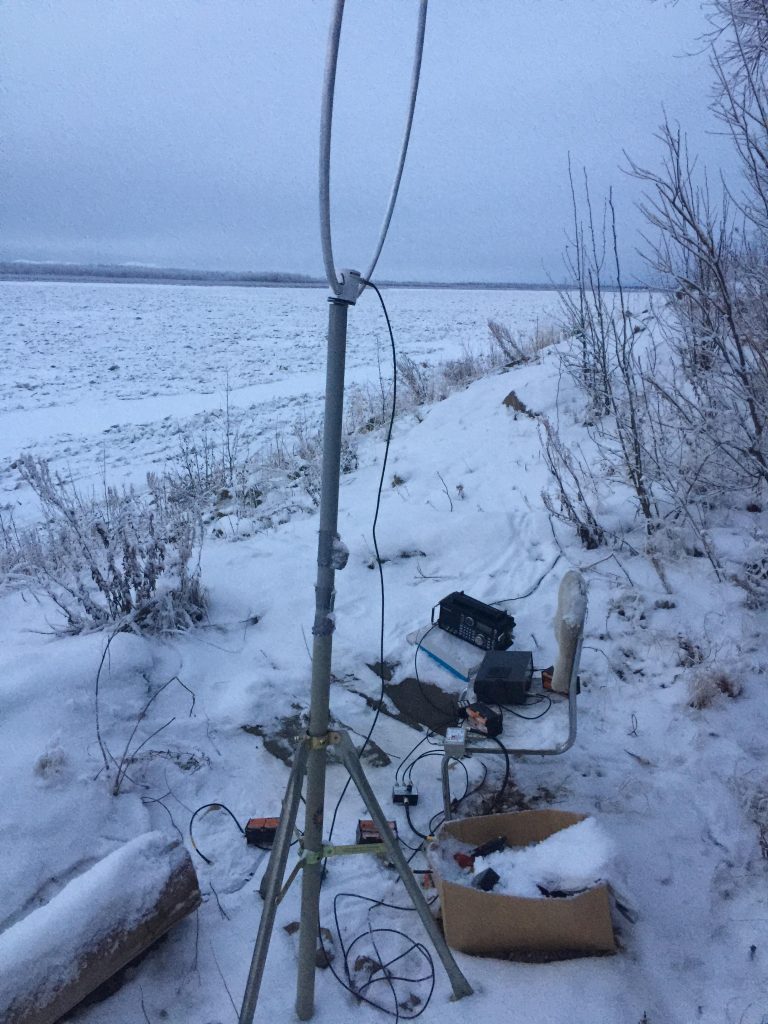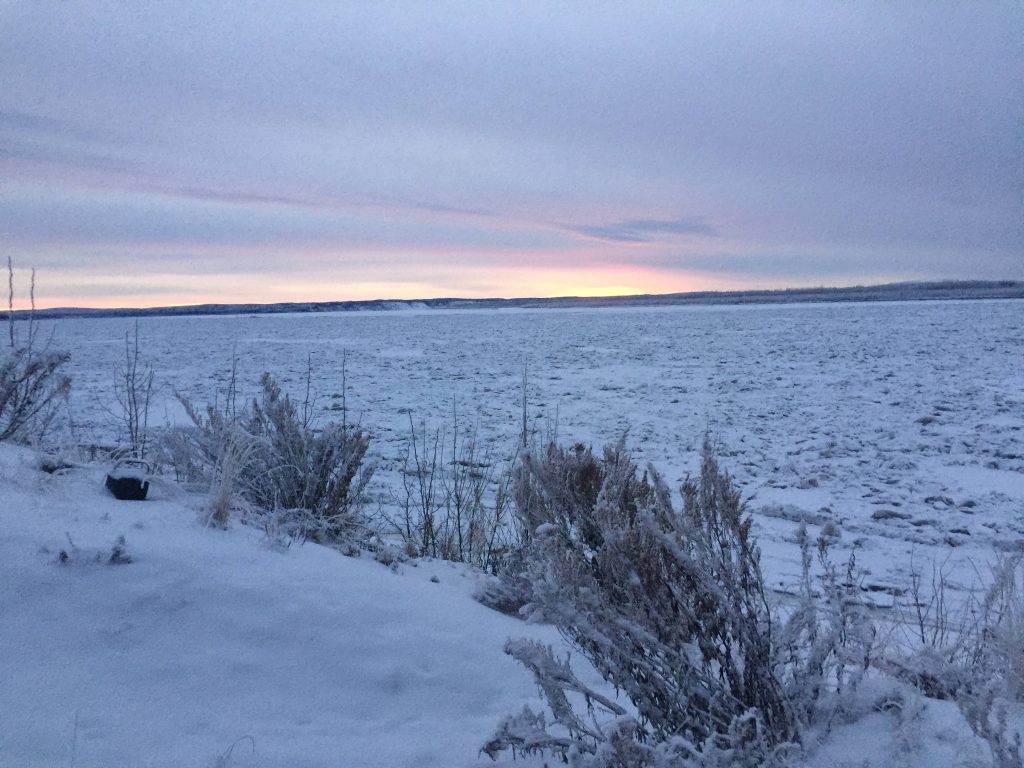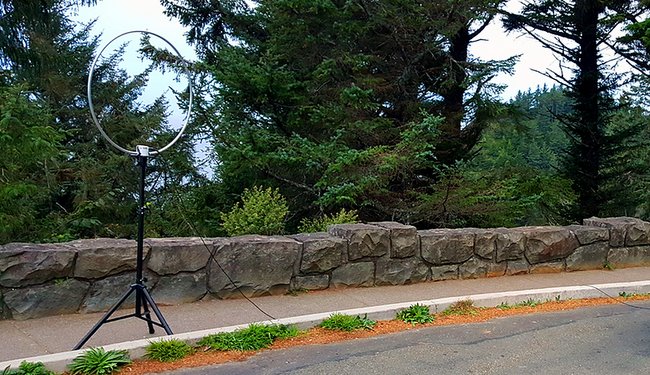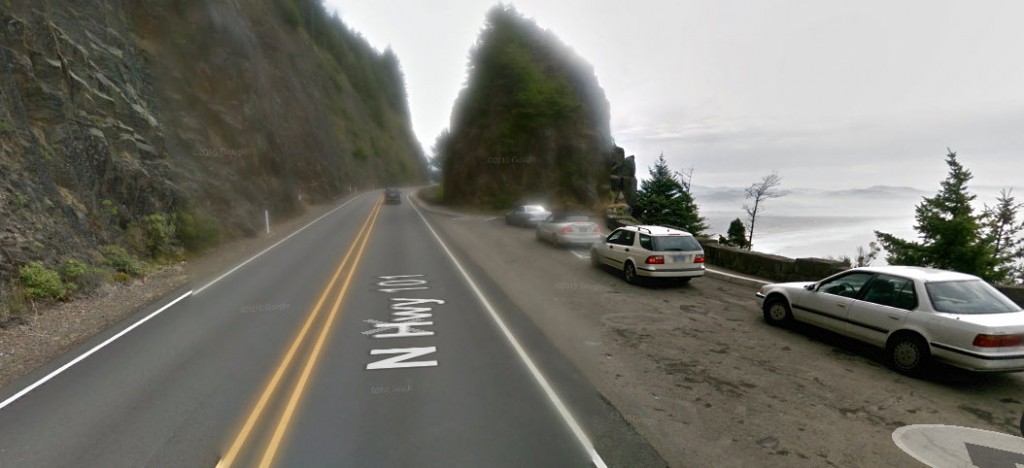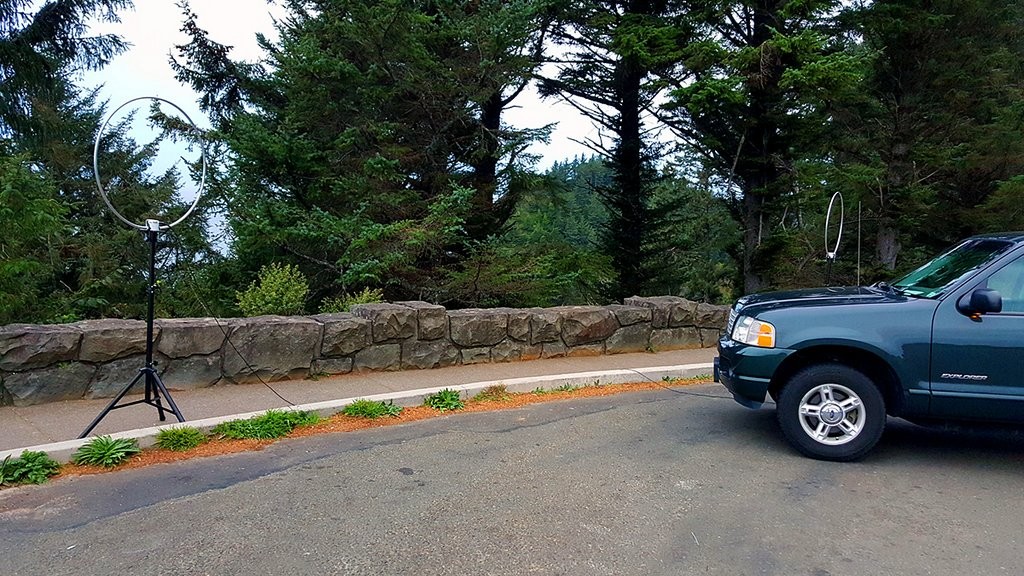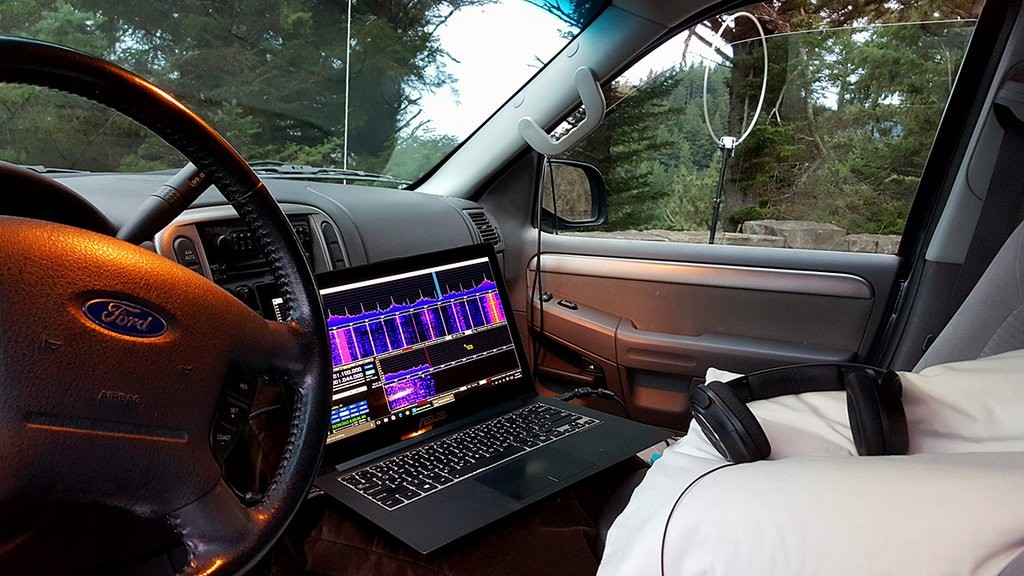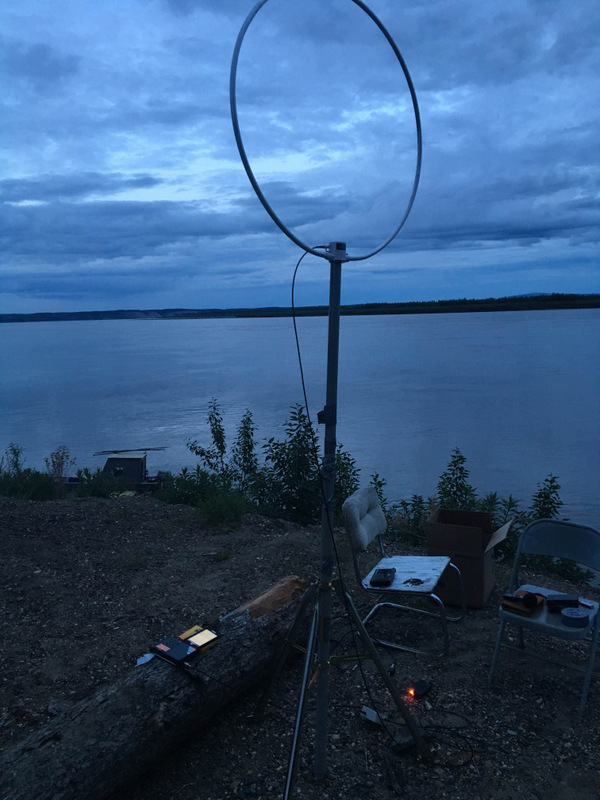
Here are some Shortwave logs from the central interior region of Alaska. I used a Tecsun PL880 and 225 foot long wire with Emtech ZM2 Tuner or a Wellbrook ALA1530LNP.
I’ve only used the Wellbrook for two days so I can’t really offer a thorough comparison yet. There was one case in particular where the 225 foot long wire and ZM2 tuner beat the Wellbrook by a large margin.
I don’t log everything I hear, but everything I do log gets recorded into an mp3 format audio clip. The audio recording helps tremendously with my QSL return rate, especially when I am hearing a broadcast in a language I don’t understand
I hear China Radio International, China National Radio, Radio Nacional de Brasilia/Amazonia, FEBC, World Harvest Radio and others regularly so I don’t log them because I try and keep my logs to what is interesting for one reason or another (programming, music, etc.) or rare/interesting.
3260 & 3325 kHz Papua New Guinea, NBC Radio. 1027 to 1034 UTC. 3325 Bouganville is carrying a man talking in a combination of Pidgin and English discussing mines, mine safety and mine regulations. Better then average signal with only light fading and interference. 3260 kHz Mandang is running music followed by an announcer talking about what I think are upcoming programming highlights. Fair signal, way better then usual
NBC Radio Mandang 3260 kHz audio: https://goo.gl/pmB8DD
NBC Radio Bouganviulle 3325 kHz audio: https://goo.gl/WKKEPJ
4870 kHz Indonesia, Radio Republik Indonesia Wamena. June 12 1001 UTCA regular visitor in the early morning hours here. not daily, but here often. Today’s signal is fair but with a moderate amount of fading and static crashes/interference. Usual fair of what I think is local music is being played.
Radio Republik Indonesia Wamena 4870 kHz audio: https://goo.gl/hjF1JL
5020 kHz Solomon Islands, Solomon Islands Broadcasting Corporation. June 12 1011UTC. Higher side of good signal with all factors taken into account. Only a little bit of fading during christian music.
Audio of Solomon Islands Broadcasting Corporation 5020 kHz here: https://goo.gl/d8BFX2
5745 kHz US, VOA Radio Gram. June 11 0943. The first time I logged VOA’s Radio Gram broadcast. There was something creating a loud buzzing noise but I could still hear the digital data. Only a little Russian text and text in english decoded for me. I will definitely try again!
VOA Radio Gram 5745 kHz audio here: https://goo.gl/LfxJ6w
6070 kHz DPRK, Voice of Korea.June 11 1005UTC. Fair signal, but low modulation. Announcers voice is lower then the music. Fair amount of fading. I heard their usual marching/patriotic music. This is not a frequency I usually hear them on, wether owing to I am not out when this frequency is on, conditions or I hear usually CFRX Toronto.
Voice Of Korea 6070 kHz audio here: https://goo.gl/SzXuEg
6115 kHz China, Voice of Strait. June 11 1008 UTC. Fair signal with a fair amount of fading. Sounds like a man talking, could be a news broadcast or interview. Not sure.
Voice Of Strait 6115 kHz audio here: https://goo.gl/V92tlD
7260 kHz Vanuatu, Radio Vanuatu. June 7 0857UTC. Low side of fair signal with interview in english and mentions of Vanuatu. Interview ends and music plays, one song sounds like it’s a kids chorus. There is a fair amount of fading and static crashing/atmospheric noise. Radio Vanuatu is habitually, chronically, woefully unde rmodulated on a daily basis. Just a few days after this logging was made, I had what my radio signal meter showed as a good signal but NO audio. The signal was so under modulated I had no audio but I had a signal! I would actually listen to them if they played more music and had better modulation
Radio Vanuatu 7260 kHz audio here: https://goo.gl/V1GMQS
9545 Solomon Islands, Solomon Islands Broadcasting Corporation. June 11 0835. SIBC was on over 3 hours late on 9545 kHz, it’s supposed to sign off at 0500UTC and switch to 5020 kHz but at 0835UTC this night it was still on. 9545 kHz staying on late has been happening a lot lately. 9545 kHz is used as SIBC’s workday frequency with 5020 kHz being used in the early to mid morning and afternoon/evening. In this recording SIBC is fairly strong here with light fading and static. Whenever 9545 kHz is on late, it seems to be stronger then 5020 kHz would be. My logging tonight starts with an interview then music is being played.
Audio of SIBC 9545 kHz here: https://goo.gl/0AIj5n
12035 Mongolia, Voice of Mongolia. June 11 1018UTC. NEW! This is a new logging for me. weak signal playing music. Was able to match the interval tune and the announcers voice heard during my logging with a clip of a recent broadcast on their website.
Audio of Voice of Mongolia 12035 kHz here: https://goo.gl/Y2QXH7
15400 kHz Romania, Radio Romania International. June 12 1006 UTC. News broadcast in French. Somewhat weak, but steady signal with only light fading.
Audio of Radio Romania International 1540 kHz here: https://goo.gl/OBK0Q9
17770 kHz Phillipines, Radio Liberty targeting Siberia. June 12 0948. What sounded like a man in Russian during a news broadcast or interview. Weak but steady signal.
Audio of Radio Liberty 1770khz here: https://goo.gl/5fxzxJ
I could use some opinions and inputs from others on something:
I am DXing about 500 feet from the transmitter sites for KXES-LPFM 92.9 and KIYU-FM 88.1 along with K10LJ Channel 10. The FM’s are only 100 watts and the TV station is only 10 watts of Digital RF. However, the FM’s overload my Shortwave radio around 9.4 to 9.6 MHz along with the lower to mid part of the tropical bands. I have a MCM Electronics and Radio Shack FM trap and they help a bit, but don’t do nearly enough. I am willing to spend $100 or so for a good FM Trap/Filter. I’ll spend a little more if I have to and the product is proven at works. I can null out the interference by rotating my Wellbrook ALA1530LNP, but I may be nulling out the signal I want to hear at the same time. Returning things for me is a hassle so I’d rather pay good $ for something that works. Feel free to email me, [email protected] or reply to this thread.
Paul Walker is located in Galena, Alaska and is a regular contributor to the SWLing Post. Be sure to check out Paul’s YouTube channel and SoundCloud channel where everything he logs is recorded and posted. Click here to read his other contributions on the SWLing Post.

